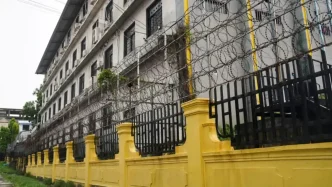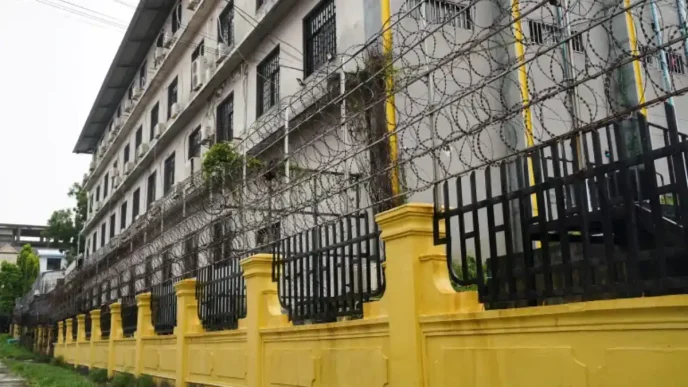In a significant stride toward healing the lingering wounds of war, a state-of-the-art training range for explosive ordnance disposal (EOD) was inaugurated in Hanoi’s outlying Ba Vi district on May 2, 2025. This facility, funded by the United States and delivered to the Vietnam National Mine Action Centre (VNMAC), symbolizes not only a deepening of bilateral ties but also a shared commitment to addressing the deadly legacy of unexploded bombs and mines from the Vietnam War. As the two nations mark the 30th anniversary of diplomatic relations, this project underscores a broader narrative of reconciliation and cooperation under their recently elevated Comprehensive Strategic Partnership.
A Step Forward in Mine Action
The two-hectare training range, supported by a grant of over US$700,000 from the US Government, is a critical addition to Vietnam’s National Mine Action Programme for 2010–2025. Construction began in July 2024, and the facility now boasts classrooms, kitchen and sanitation blocks, assembly zones, specialized areas for mine detection and disposal, parking spaces, internal roads, and a calibration zone for equipment. Designed to meet International Mine Action Standards (IMAS), it aims to bolster Vietnam’s capacity to safely clear unexploded ordnance (UXO), a persistent threat that continues to endanger lives and hinder development decades after the war’s end.
The facility’s handover to VNMAC is poised to transform the center into a national hub for mine action training. This development will enable more effective and standardized training programs, equipping local teams with the skills needed to tackle one of the war’s most enduring challenges. According to officials present at the inauguration, the range represents a tangible outcome of years of collaboration between the US and Vietnam, reflecting a mutual dedication to peace and security.
Decades of Humanitarian Commitment
The opening of the Ba Vi training range is part of a broader US effort to support Vietnam in mitigating the war’s aftermath. Since 1993, the US has invested a total of US$234 million in initiatives ranging from UXO clearance to dioxin remediation at sites like Da Nang and Bien Hoa airports, as well as assistance for people with disabilities. US Ambassador to Vietnam Marc E. Knapper, speaking at the ceremony, highlighted the contributions of both the Vietnamese government and non-governmental organizations such as Norwegian People’s Aid and PeaceTrees Vietnam. These groups have partnered with local entities, including the Quang Tri Mine Action Centre, to advance clearance efforts in some of the most affected regions.
“This facility is a testament to the two nations’ shared commitment to peace and security” said Ambassador Knapper, emphasizing Vietnam’s growing role as a proactive and responsible member of the international community. He also noted that the project aligns with the 2023–2028 defense cooperation plan, which prioritizes UXO remediation as a key pillar of bilateral defense ties.
Maj. Gen. Lance Okamura, Deputy Commanding General for the US Army Pacific (USARPAC), echoed these sentiments, calling the facility’s opening a major milestone in the ongoing humanitarian mine action program. He described it as the result of meticulous planning and sustained partnership, underscoring the importance of such initiatives in fostering trust and goodwill between former adversaries.
The Lingering Threat of Unexploded Ordnance
The legacy of the Vietnam War remains a stark reality for many communities across the country. It is estimated that millions of tons of bombs, mines, and other munitions were dropped during the conflict, with a significant portion failing to detonate on impact. These unexploded remnants pose a constant danger, particularly in rural areas where farming and development activities often unearth hidden threats. Over the decades, thousands of Vietnamese civilians, including children, have been killed or injured by UXO, while vast tracts of land remain unusable due to contamination fears.
Vietnam’s National Mine Action Programme, launched in 2010, seeks to address this crisis through systematic clearance, public education, and survivor assistance. The addition of the Ba Vi training range is expected to accelerate these efforts by providing a dedicated space for honing technical expertise and coordinating operations. Experts suggest that while complete clearance may take decades, facilities like this one are crucial for building local capacity and reducing reliance on international support over time.
A Symbol of Reconciliation
The timing of the inauguration carries profound symbolic weight, coinciding with the 30th anniversary of normalized diplomatic relations between the US and Vietnam in 1995. What began as a cautious rapprochement has evolved into a robust partnership, culminating in the elevation of ties to a Comprehensive Strategic Partnership in 2023. This status places Vietnam among a select group of US allies, reflecting shared interests in security, trade, and regional stability in the Indo-Pacific.
Humanitarian projects like the EOD training range play a vital role in this relationship, serving as tangible reminders of both nations’ willingness to confront the past while building a collaborative future. For many Vietnamese, such initiatives offer a sense of closure, acknowledging the war’s toll while prioritizing practical solutions over lingering grievances. For Americans, they represent an opportunity to fulfill moral obligations and strengthen ties with a key regional partner.
Analysts note that defense cooperation, including UXO remediation, has become a cornerstone of US-Vietnam engagement. Beyond humanitarian benefits, these efforts contribute to broader strategic goals, such as enhancing Vietnam’s resilience and fostering trust in military-to-military interactions. As Ambassador Knapper pointed out, the Ba Vi facility is not just about clearing bombs—it is about clearing a path toward deeper mutual understanding.
Challenges and Future Prospects
Despite the optimism surrounding the new training range, significant challenges remain. The scale of UXO contamination in Vietnam is staggering, with some estimates suggesting that up to 20% of the country’s land area may still be affected. Clearance operations are labor-intensive, costly, and dangerous, requiring specialized equipment and highly trained personnel. Moreover, funding constraints and the need for coordination among multiple stakeholders—government agencies, international donors, and NGOs—can slow progress.
There are also concerns about ensuring that training translates into measurable outcomes. While the Ba Vi range promises to elevate VNMAC’s capabilities, sustained investment and oversight will be necessary to maintain equipment, update curricula, and expand outreach to heavily contaminated provinces. If these hurdles are not addressed, there is a risk that the facility’s impact could be limited, leaving rural communities vulnerable to UXO hazards for years to come.
Public awareness and survivor support are equally critical components of mine action. Many Vietnamese living in affected areas lack adequate information about identifying and reporting UXO, while those injured by explosions often face barriers to medical care and rehabilitation. Integrating community education and assistance programs into VNMAC’s training framework could amplify the facility’s benefits, ensuring that technical advancements are matched by grassroots impact.
Looking Ahead
As Vietnam and the US continue to navigate their complex shared history, projects like the Ba Vi training range offer a blueprint for constructive engagement. They demonstrate how targeted cooperation can address humanitarian needs while reinforcing diplomatic and strategic ties. With the Comprehensive Strategic Partnership providing a framework for expanded collaboration, there is potential for further joint initiatives in mine action, environmental remediation, and beyond.
For now, the focus remains on making the new facility a success. Its role in training the next generation of EOD specialists could prove transformative, not only for Vietnam but also for the broader region, where UXO contamination from past conflicts persists. As reforms and partnerships unfold, questions linger about how quickly and effectively these efforts will translate into safer lives for those still haunted by the echoes of war.
















